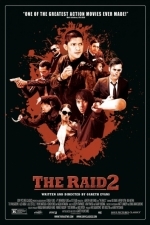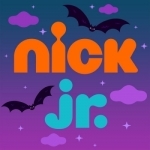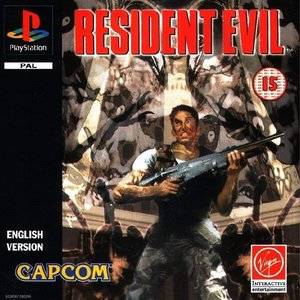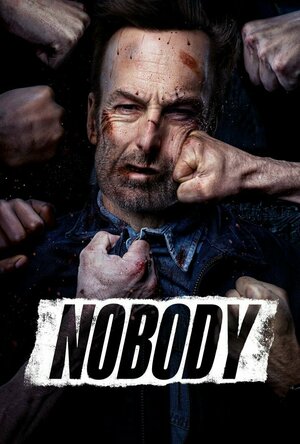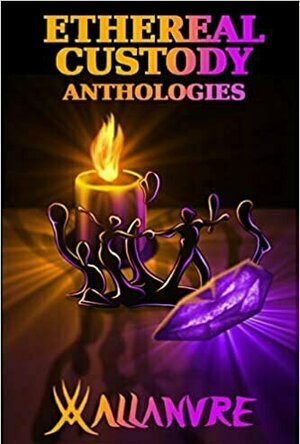JT (287 KP) rated The Raid 2 (2014) in Movies
Mar 10, 2020
The follow up to The Raid packs an even harder punch, with our hero Rama (Iko Uwais) sent undercover to bring down a crime family and uncover yet more police corruption.
The first film was simplistic enough, a SWAT team enter a building and (without the use of an elevator) must navigate their way up to the top floor to bring down a powerful but mediocre drug lord. Praised for its gritty no holds barred fight sequences, and perfectly timed action it was nothing short of a hit.
Part 2 follows practically from where the last ended, Rama is hurried away to a secluded location and given the rundown explaining that all his efforts were for nothing, but that he still has a big part to play. Although he doesn’t have much of a choice in the matter.
The-Raid-2-Gareth-Evans
To keep his family safe he has to get close to the arrogant son of a mob boss, Ucok (Arifin Putra), and to do this must infiltrate a prison by committing a high profile crime that will get him noticed by the mafia top brass. What is only supposed to be a few months turns into a couple of years, giving Rama more than enough time to get right under the skin of Ucok.
The storyline isn’t anything unique with shades of Infernal Affairs about it, police corruption, undercover cops and feuding mafia families probably seem all too familiar but director Gareth Evans lays it out in such a way that the similarities end right there.
The story delves deeper into several subplots all of which trail off on their own, but they don’t hamper the overall narrative or confuse things in a way which will make the film harder to follow and at an ass numbing 150 minutes that might be easier said than done.
Then there is the inclusion of three of the badest characters you’re ever likely to see. Hammer Girl, whose special moves entail ripping people in two with claw hammers, Baseball Bat Man, you can probably guess his unique ability and then The Assassin, who armed with a pair of kerambits’ is a silent but very much a deadly force.
There’s returning actor Yayan Ruhian who played Mad Dog in the first film but who has reappeared here as an ass-kicking hobo aiding one of the families, but ends up in the crosshairs of an instigated war were blood hasn’t been spilt in over ten years.
Evans cuts from the action with dramatic undertones, of which the performances are very good, its the gratuitous violence that Raid fans will have shelled out their money for. It’s wince-inducing on another level, whether it’s getting an arm snapped in half, a pelvis dislocated or a hammer ripped through someone’s cheek you’ll probably find yourself twisting and turning in your seat.
the-raid-2-berandal-26
The choreography is mesmerising as Evans interlocks a Godfather-like tale with action that doesn’t give you enough time to look away from the screen. From a mass prison yard scrap, an epic car chase where back seat driving takes on a whole different meaning and a jaw-dropping kitchen fight finale, it’s a film that will live long in the action memory.
Leaving the confines of a tower block behind the action and story run riot through lush green marshes, back streets and bars to city streets. The editing is short and sharp like a punch to the head, moving gracefully enough that it doesn’t judder the explosive action or disjoint the scenes of real drama.
It’s thoroughly entertaining which has justified all the hype beforehand, wonderfully shot and exhilarating throughout Evans will have his work cut out to make sure that The Raid 3 caps an action trilogy masterclass.
Matthew Krueger (10051 KP) rated the PlayStation version of Resident Evil in Video Games
Jun 27, 2020 (Updated Jun 27, 2020)
The plot: Chris Redfield and Jill Valentine, are members of an elite task force known as S.T.A.R.S., as they investigate the outskirts of Raccoon City following the disappearance of their team members. They soon become trapped in a mansion infested with zombies and other monsters. The player, having selected to play as Chris or Jill at the start of the game, must explore the mansion to uncover its secrets.
Gameplay: The player's character is a member of a special law enforcement task force who is trapped in a mansion populated by dangerous mutated creatures. The objective of the game is to uncover the mystery of the mansion and ultimately escape alive.
To fulfill the game's objective, the player uncovers various documents that provide exposition about the game's narrative, as well as clues that help them solve various puzzles within the mansion. Key items are also available that give the player access to other items or new areas. The player can arm their character with weapons to defend themselves from enemies, although the ammunition available for each firearm is limited and the player must learn to conserve the ammunition they have for situations where they will really need it
The carrying capacity of the player is limited depending on the character and items that the player does not wish to carry at the moment can be stored into an item box to be retrieved for later use. To save their progress, the player must pick up an ink ribbon and use it on any of the typewriters scattered through key locations in the game. However, the supply of ink ribbons the player can acquire is limited much like the player's ammo and healing supplies. Players will encounter and fight various infected creatures as flesh-eating zombies, undead dogs, giant spiders, and other monsters.
Resident Evil was very well received critically and commercially, and is often credited for defining the survival horror genre. Beyond video games, Resident Evil has been credited with re-popularising zombies in mainstream popular culture from the late 1990s onwards (along with The House of the Dead), leading to a renewed interest in zombie films during the 2000s. Resident Evil has since been hailed as one of the most influential and greatest video games of all time. Its success has spawned a multimedia franchise including video games, films, comics, novels, and other merchandise. The game has received dedicated ports to the Sega Saturn, Windows, and Nintendo DS. In 2002, a remake of the same name was released for the GameCube featuring updated graphics, sound, and changes to the gameplay and story. A high-definition remaster of the GameCube game was released in 2015 for modern platforms.
Resident Evil- is one of my favorite survivor horror games of all time and one of my favorite games of all times. Its intense, thrilling, suspenseful and overall scary. Resident Evil is a must to play, if you haven't already. Will you survivie the manison or not!
Bob Mann (459 KP) rated Nobody (2021) in Movies
Jun 9, 2021
Positives:
- Bob Odenkirk is charismatically dull! His character could be compared with that of Christian Wolff in 2016's "The Accountant". But in that movie, Ben Affleck was just dull dull! Here Odenkirk brings his character to life in a truly wonderful and sparkly way.
- The movie is a hyper-violent but adrenaline-fuelled joy ride. There's a slight lull after the initial burglary, but then it's a downhill bobsleigh ride with no brakes from there to the end. It comes as no surprise that the writer, Derek Kolstad, is the guy behind the John Wick franchise. The script has moments of black comedy that made me laugh out loud a good few times.
- The editing here (by Evan Schiff and William Yeh) is very slick indeed, most noticeably so in the many fight scenes. The one on the bus could be pulled apart as a template for a film school lesson.
Negatives:
- I've very little to add here. Yes, it's a rather shallow story, but I found it a hugely entertaining rush of a movie. However the intensity of the violence will not be for everyone. The lady a few seats along from me had her hands over her eyes for at least 75% of the movie I reckon.
- I wasn't clear where the character played by RZA fitted into the mix. Having (post film) seen the cast list, I'm even more confused!
Additional notes:
- There is a post credit scene in this one, shortly into the end credits, so don't dive for the doors too quickly if you want to see it. That being said, it doesn't really make much sense (why are they doing this?) and it isn't particularly funny either. So if you did miss it, then don't sweat about it!
- This is a movie that I knew virtually nothing about on going into it. Which is the best way to see it. As such, it's worth NOT watching the trailer, and going in on that basis if you can.
Summary Thoughts on "Nobody": It's a pretty shallow plot.... but it's also bloody good fun! I expected this to follow the well worn road of classic "revenge" movies - like "Death Wish" or "Taken" - but was pleasantly surprised that it didn't. A better comparison might be Michael Douglas's "Falling Down", but with the central character having more heart.
There are lots of nods to sequences from other movies in here: "Home Alone" (for obvious reasons!); "Patriot Games" and "The Equalizer" came to my mind. And the finale reminded me strongly of the anarchic chaos of 2016's "Free Fire".
Intellectual it ain't. But provided you can stomach the Tom and Jerry style violence, and suspend your belief at the punishment Hutch can take without hospital treatment, then "Nobody" ticks all the boxes for a fun night out at the flicks.
(For the full graphical review, please check out the One Mann's Movies review here - https://bob-the-movie-man.com/2021/06/09/nobody-what-kevin-mcallister-did-once-all-grown-up/. There's also a new Tiktok channel at onemannsmovies. Thanks).
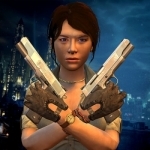
Secret Agents Spy Mission 3D -Covert Escape Action
Games and Entertainment
App
A fierce police vs secret agent and mafia vs crime swat spy mission game where kill or to be killed...

ezPDF Reader: PDF Reader, Annotator & Form Filler
Productivity and Business
App
ezPDF Reader is the world's first and only PDF viewer with the embedded multimedia (audio & video)...

Couch to 5K® - Run training
Health & Fitness
App
Get off the couch and get running with the OFFICIAL Couch to 5K® training app! This oft-imitated...

MoviePro : Video Recorder
Photo & Video
App
MoviePro - the most powerful video recording & film making app with innumerable options as seen on...
Ivana A. | Diary of Difference (1171 KP) rated Ethereal Custody: Anthologies in Books
Aug 3, 2020
<a href="https://diaryofdifference.com/">Blog</a>; | <a href="https://www.facebook.com/diaryofdifference/">Facebook</a>; | <a href="https://twitter.com/DiaryDifference">Twitter</a>; | <a href="https://www.instagram.com/diaryofdifference/">Instagram</a>; | <a href="https://www.pinterest.co.uk/diaryofdifference/pins/">Pinterest</a>;
<img src="https://diaryofdifference.com/wp-content/uploads/2020/06/Book-Review-Banner-60.png"/>;
Ethereal Custody: Anthologies is a story about a young man, who was born in an underground slum and decides to risk his life for a chance to reach the surface. During his pursuit, he discovers that he is part of a much larger scheme of a supernatural nature, in an alternate reality. To escape his world, he grasps the opportunity to create utopia. But paradise has a dark side too.
While we follow this main character, we also follow different characters, who are part of the alternative world that this man created in his dreams - with their own stories of supernatural nature, Angels and people with animalistic tendencies involved as well.
<b><i>“We don’t hold grudges against Angels who didn’t save us. Our self-held grudges stem from the idea that we should have been able to save ourselves.”</i></b>
The story follows a few different planets, with a lot of different characters.
The book is written in the form of a journal. For me, it was very difficult to keep track of the planets and characters. I was losing interest very quickly, re-reading the same page a few times, seeking for adventures and plot twists, when all I could see were descriptions of places and objects. Sometimes there were good parts, where the story was really intriguing. Other times, I had to put the book down and read something else.
<b><i>“I don’t know if it’s forgiveness or love or grieving. But life feels like this slow and heartbroken process of learning to live without something we wanted so badly that we cannot have. To go on without those loved people we miss so much and all the precious moments we could have shared and knowing those futures will never be. It’s having to learn how to trek forward in a new life without a part of yourself; that missing fragment of a loving heart we surrendered and gave away as a gift to someone who’s no longer here with us.”</i></b>
There were many descriptions of places being repeated with the exact words. This made me wonder and question myself whether I’ve read this before. I then needed to go back in the book and reassure myself. It was very irritating to go back and find the same paragraph a few chapters earlier, with the same description of a place.
<b><i>“If there’s anything I learned tonight, it is this: I want to die with a smile on my face.”</i></b>
I am sad to say I didn’t enjoy this book.
Honestly, I liked the idea and where it was intended to go. I also liked the way it was written in the form of a journal. However, the writing was bad. Not only from a grammar and editing point of view, but also the skill to keep the reader intrigued. This book put me through a big reading slump. I am not a fan of DNFing books, but I was close with this one. I recommend Ethereal Custody: Anthologies, if you enjoy multiple planets, a lot of characters and a bit of supernatural sprinkles on top, but this book wasn’t for me.
<b><i>“We are afraid to be silent, yet afraid to speak. We fear to be alone with our demons in the dark, yet we are terrified of those demons being seen in the light among friends. Afraid to be powerless; afraid to be influential. I don’t understand it. I just don’t want to be afraid of myself anymore.”</i></b>

Loecsen - Audio travel phrasebook
Travel and Education
App
7 key features of the app: 1 - 400 phrases, arranged by theme, to help you get by in 40 languages...
